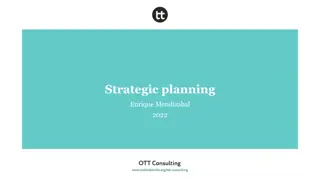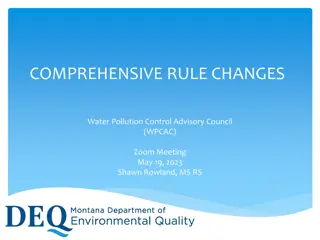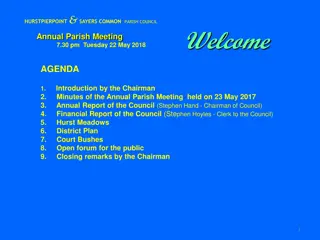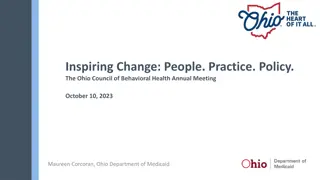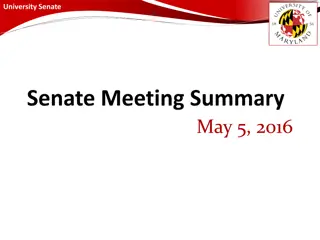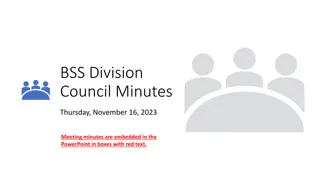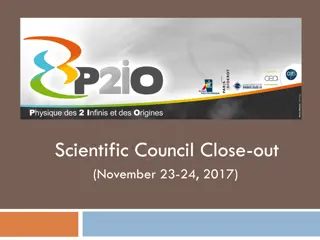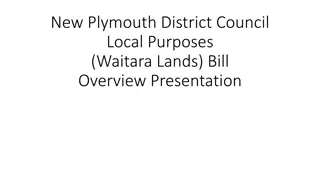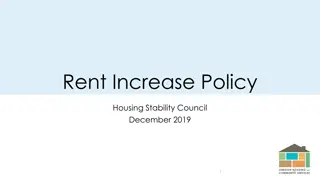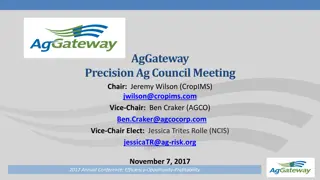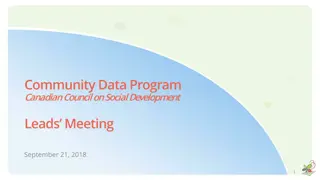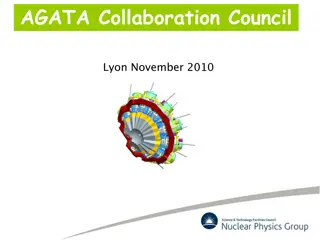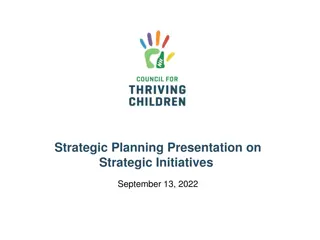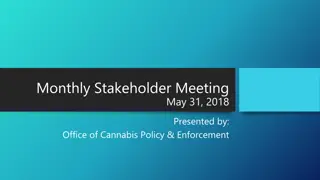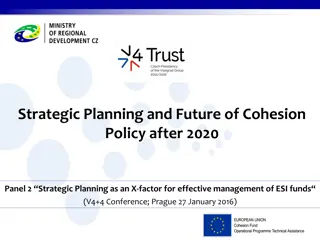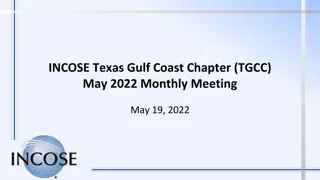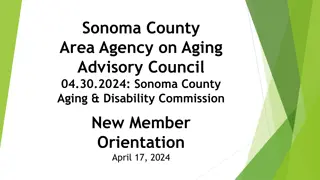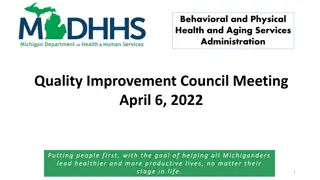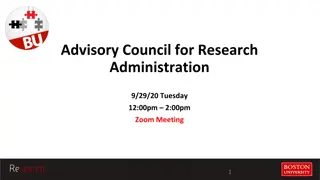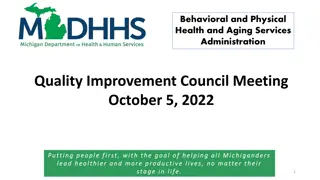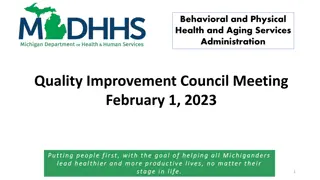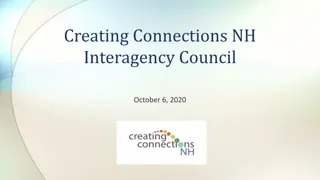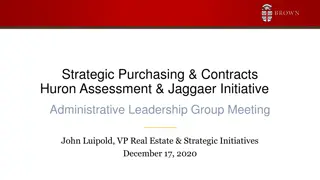Strategic Policy Council Meeting Highlights May 25, 2016
Highlights from the Strategic Policy Council meeting on May 25, 2016 include agenda items like Executive Committee briefing, measuring Florida's progress, funding model updates, and market intelligence portal updates. Key discussions focused on increasing worker and employer prosperity, reducing welfare dependency, and achieving Florida's talent dashboard vision. Various speakers presented on different topics to drive progress and economic growth in the state.
Download Presentation

Please find below an Image/Link to download the presentation.
The content on the website is provided AS IS for your information and personal use only. It may not be sold, licensed, or shared on other websites without obtaining consent from the author. Download presentation by click this link. If you encounter any issues during the download, it is possible that the publisher has removed the file from their server.
E N D
Presentation Transcript
Strategic Policy Council May 25, 2016
Welcome and Remarks Jennifer Grove Chairman
Todays Agenda The Goal Executive Committee Meeting Briefing Measuring Florida s Progress Performance Funding Model Update Market Intelligence Portal Update
The Goal Michelle Dennard Vice President, Policy
Measuring Floridas Progress Adrienne Johnston Chief, Bureau of Labor Market Statistics Department of Economic Opportunity
Floridas Talent Dashboard Strategic Policy Council Meeting May 25, 2016
Floridas Talent Dashboard Vision Florida will be the global leader for talent Goal Increase the prosperity of workers and employers; reduce welfare dependency; increase economic self-sufficiency; meet employer needs; and enhance worker productivity and business competitiveness.
Increase Worker Prosperity Measure Real Wage of Florida Workers Interpretation Real wages adjust for inflation. An increase in real wages tells us that workers have more purchasing power Does not address Real wages can be driven by price or wage changes
Increase Employer Prosperity Measure Percent of Florida businesses that are expanding employment Interpretation Business environment is conducive to producing more goods or services, thus requiring more employees Does not address The scale of expansion or indication of future growth
Reduce Welfare Dependency Measure Welfare receipts as a percent of personal income Interpretation Personal income is comprised of salaries, wages, bonuses, investment earnings, and welfare Decreasing welfare receipts as a percent of personal income indicates that personal income is increasingly driving by earnings Does not address The distribution of welfare or indicate declines in personal income
Increase Economic Self-Sufficiency Measure Percentage industries paying above a given threshold (i.e. Poverty level, public benefits requirement) Interpretation More industries paying average salaries higher than a specified threshold indicates more workers are earning a self-sufficient wage Does not address Number of workers who qualify for public benefits or wage distributions
Meet Employer Needs Measure Supply Demand Ratio Interpretation The ability of Florida s industry to employ the number of workers looking for work Ratio of 1 means there are exactly enough workers to fill open jobs Does not address How workers align to job openings based on training, skills or occupation
Increase Worker Productivity Measure Per capita Gross Domestic Product (GDP) Interpretation GDP is an overall measure of economic productivity Increases in this measure can, at least in part, be attributed to increases in worker productivity Does not address Population and non-labor related influences on GDP
Enhance Business Competitiveness Measure Industries that employ more workers than the national average (location quotient above 1) Interpretation The relative strength of employment Florida s industries to the nation Larger values indicate greater diversification Does not address Other measures used to compare industries to the nation
Next Steps Refine metrics based on feedback Develop secondary metrics to address issues identified Develop interactive tool to display dashboard Continue to refine based on feedback
Performance Funding Model Update Aaron Schmerbeck, Ph.D. Chief Economist
Introduction Updates to the PFM to take effect July 1, 2016. o Updates to metrics o Data sources o Common Measures Gateway o Web-based performance reporting o Minimum threshold negotiation Performance Snapshot: Business Engagement We expect performance dollars for FY 2015-16 to be awarded in January 2017.
Long-Horizon Metrics Average Earnings oEarnings from the two quarters after exit. Earnings per Dollar Spent oTotal earned during the two quarters after exit divided by total formula funds spent. Customer Satisfaction oHow satisfied were businesses that received business engagement surveys?
Updates to Short-Horizon Metrics Time to Earnings oFY 2015-16: How long did it take people to find a job? oFY 2016-17: How long have people been without a job? Business Engagement oPerformance targets that account for response rates.
Data Sources Participant Data oFY 2015-16: Quarterly ETA tables oFY 2016-17: Nightly data extracts from EFM Demographic Data oFY2016-17: Moody s Analytics county-level forecasts and proprietary economic indicators.
Common Measures Gateway If DEO deems a local board to be out of compliance (having missed its goal on the same metric two years in a row), that board will not be eligible for incentive funds through the PFM in accordance with existing policy. The PFM is a supplement to, not a substitute for, Common Measures.
Web-Based Performance Reporting Existing system focused on Common Measures. We are developing a similar system focused on the PFM (development ongoing, July webinar) o Performance: How the PFM works additional credit, metrics, TIE model (clickable). See past performance. o Strategic: Analyze PFM relevant data (case-level drill down). Make data-driven decisions. o Policy: Analyze system-wide performance. Set data- driven policy.
Minimum Threshold Negotiation Boards will receive targets for FY 2016-17 in the June PFM monthly update and webinar. Boards may decrease some minimum thresholds at the expense of increasing others.
Business Engagement (As of May 12, 2016) Top Performance Scores 1. CareerSource Okaloosa Walton 2. CareerSource Escarosa 3. CareerSource Research Coast 4. CareerSource Brevard Top Response Rates (scores above 40) 1. CareerSource Heartland 2. CareerSource Okaloosa Walton 3. CareerSource Gulf Coast 42% 4. CareerSource Pasco Hernando 112% 101% 99% 98% 85% 70% 40%
Webinar Schedule June: Performance Target Statistical Model July: Web-Based Performance Reporting August: Long-Horizon Metrics
Market Intelligence Portal Update: Research Coast Skills Gap Assessment Aaron Schmerbeck, Ph.D. Chief Economist
Standard Occupational Classification to Classification of Instructional Program: Nursing - LPN
Research Coast Supply and Demand Analysis: Nursing - LPN 250 200 150 100 50 0 1998 1999 2000 2001 2002 2003 2004 2005 2006 2007 2008 2009 2010 2011 2012 2013 2014 2015 2016 2017 2018 2019 2020 2021 2022 2023 Supply Demand
Research Coast Supply Institutions: Nursing - LPN
Research Coast Jobs: Nursing - LPN






